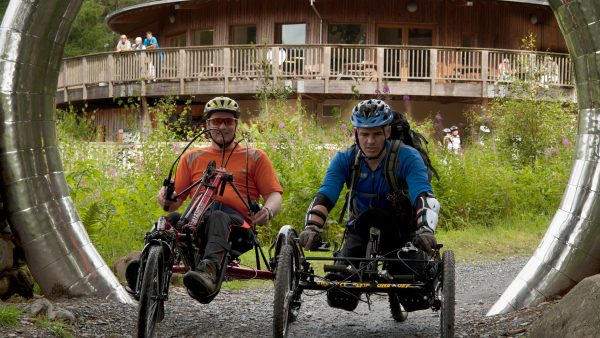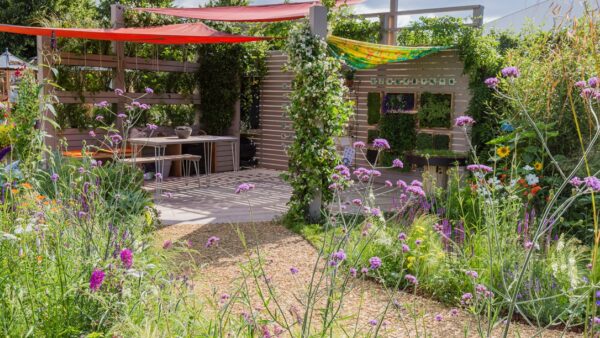Equal access is best access
We believe that everyone should have equal physical and intellectual access to outdoor spaces and experiences. Access is so much more than wheelchair ramps and Braille. It means ensuring that all people feel welcome and able to enjoy experiences of equal value, in ways that are meaningful to them. It’s about ensuring that families and friends of all ages can access and enjoy an experience together.
Access requirements can be fluid; a spell on crutches, forgetting a pair of reading glasses, using a pushchair or being pregnant, all affect how we can access and enjoy outdoor spaces. We work to develop, promote and champion inclusive design because it benefits all of us.
What makes the Sensory Trust approach distinctive?
Our approach combines accessibility with quality of experience. Whether we are undertaking an access review, or advising on access improvements, we always keep a view of what this means in relation to the experiences on offer.
We all interpret the world differently. There is no wrong or right way to move through a space, take in a view or react to something. Many groundbreaking designs and innovations have arisen from thinking creatively about accessibility issues. Text to voice software and voice recognition technology, as well as the cordless kettle, have their origins in the accessibility field but have subsequently been adopted by the mainstream.
We believe that accessibility shouldn’t be viewed as an obstacle but an opportunity to innovate.
"I’m passionate about accessibility, not just because I believe in a level playing field, but because [inclusive design] makes life more liveable for everyone."
Eve Andersson, Google
What the law says
Equal access is underpinned by legislation. In the UK the Equality Act 2010 requires service providers to avoid discriminating against people who have any one of nine ‘protected characteristics’. It means that if you design in ways that excludes people with disabilities you could be breaking the law.
Whilst the legislation is a crucial baseline, we see an inclusive approach as an opportunity to create places that are more inspiring and meaningful for the widest mix of people. Our approach therefore goes beyond basic legal requirements.
Creating equality of experience
Technical accessibility (steps, paths, toilets etc.) will determine if people can get to and around a site, but the experiences on offer will determine if people want to. This doesn't necessarily mean the same experience for each person. The crucial aim is for the overall combination of individual experiences to add up to an equally great experience for all visitors.
Accessibility is shared by families and friends and the ambition should always be to avoid separating people so that people can enjoy experiences together. We want to see the ‘wheelchair only access’ become a thing of the past.

Access chain to the rescue
Access is a complex subject. There are many wants and needs to consider and a whole host of potential barriers to address. We created the Access Chain to help. It looks at accessibility from the user’s perspective and we use it as a framework for our access reviews, planning visitor information and nature activities in schools. It is freely available for you to use.
Inclusive design, challenging perceptions, what is 'normal'?
As a society we have become so used to designing places for a supposed ‘norm’ that we have lost sight of how many people we are cutting out of the picture. The problem with averages is that it consistently moves people to the fringes – anyone with a non average shoe size will be familiar with always having to ask to try something on, it will never be out on the shelf. In truth, diversity is normal. All that an inclusive approach does is to stop seeing our differences as exceptional and instead to see them as part of the creative soup.
Learning from first-hand experience
We work closely with people who are most likely to experience barriers to access, especially people with disabilities, older and younger people. This involves people taking part in access reviews and testing new ideas with us. We listen closely and we continue to gain new insights about what does and doesn’t work well in practice. Involving people in planning will save costly mistakes and ensure buy-in from an early stage.
Out with segregation, in with integration
Segregation reinforces feelings of difference. Rather than making two signs for people of different reading abilities we want one sign to be inclusive and do it all. Rather than making a wheelchair route and a stepped route we believe that everyone should have the ability to enjoy spaces together without having to be separated.




